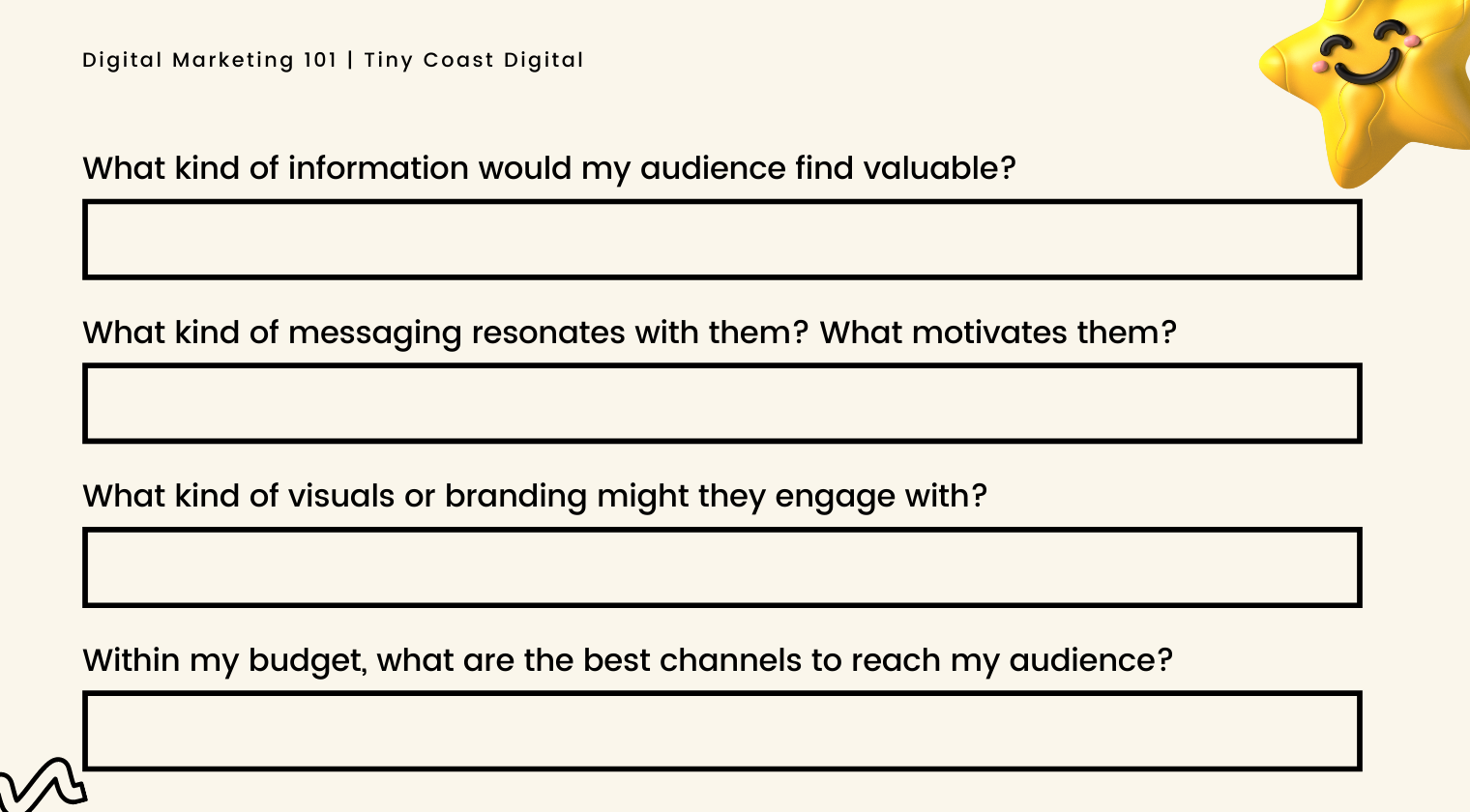Squarespace Web Design: Optimizing Your Website for Search Engine Visibility
When it comes to designing a website, it's important to not only create a visually appealing site, but also ensure that it can be found by potential customers. This is where Squarespace SEO comes into play. In this article, we'll explore the key techniques for optimizing your Squarespace website for search engines and crafting meaningful and helpful content that resonates with your audience and helps improve your visibility in search engines.
Before we get started, what exactly is SEO? SEO stands for Search Engine Optimization, and is the practice of designing and optimizing a website in order to improve discoverability in search engines like Google. SEO generally falls into two buckets, on-page and off-page SEO.
On-page SEO refers to the optimization of various on-page factors that affect the visibility and ranking of a web page in search engine results pages (SERPs). This includes optimizing the website content, meta tags, internal linking, and headers, among other elements.
Off-page SEO, on the other hand, refers to all the optimization activities that happen outside of the website. This includes link building, social media marketing, guest blogging, and other external optimization strategies that help a website gain authority and relevance in the eyes of search engines.
Both on-page and off-page SEO are critical components of a comprehensive SEO strategy. While on-page SEO helps improve the quality and relevance of a website's content, off-page SEO is essential for building authority and establishing credibility with search engines. When done properly, a combination of on-page and off-page SEO can help improve a website's organic search ranking and increase its visibility online.
Squarespace Website Goals
Before diving into Squarespace SEO, it's important to first understand your website goals. What do you want your website to achieve? Do you want to generate leads, sell products, or simply provide information? Once you have a clear understanding of your website goals, you can better tailor your Squarespace SEO efforts to achieve those goals.
It is essential to understand your website goals before you start designing your website. Knowing your website goals is crucial in developing a well-designed and optimized website. Firstly, understanding your website goals sets the foundation for your website's design, organization, and content.
This knowledge helps you to prioritize what is important to your website visitors and design a website that meets their needs. Moreover, understanding your website goals helps you to focus on creating quality content that is relevant to your target audience.
When your website content aligns with your goals, it becomes easier for search engines to understand your website and rank it higher in search engine results pages. Additionally, understanding your website goals helps you to focus on SEO tactics like keyword research, metadata optimization, and link building to increase your rankings on search engines. Thus, it is crucial to understand your website goals to design a website that is optimized for search engines and meets your visitors' needs.
To effectively outline and understand their website goals before focusing on SEO and content creation, an individual can follow these steps:
1. Identify the purpose of the website: Determine the main objective of the website. Is it to sell products or services, build brand awareness, promote a cause, or provide information?
2. Define the target audience: Determine who the website is intended for, what their interests and needs are, and what they expect from the site.
3. Conduct a competitive analysis: Research similar websites in the same industry or niche to see what they are doing well and where they can improve.
4. Develop a site map: Map out the structure of the website, including the different pages, sections, and categories that will be included.
5. Determine content needs: Determine what type of content will be included on the website, such as blog posts, product descriptions, videos, or images.
6. Set measurable goals: Set specific, measurable goals that align with the purpose of the website. For example, increasing conversions, improving engagement, or boosting website traffic.
7. Determine key performance indicators (KPIs): Identify which metrics will be used to measure success, such as page views, bounce rate, or time spent on the site.
8. Develop a content strategy: Develop a plan for creating and publishing content that aligns with the website goals, target audience, and SEO strategy. Understand your content pillars, so you can create meaningful content for your audience.
By following these steps, individuals can outline and understand their website goals before delving into SEO, ultimately leading to a more effective and successful website.
Understanding how people will search for your services
The next step in Squarespace SEO is understanding how people will search for your website. This involves conducting keyword research to identify the specific words and phrases that potential customers are using when searching for products or services like yours. Once you have identified these keywords, you can then incorporate them into your website content to help improve your search engine rankings.
When designing a Squarespace website that you want to rank well in search engines, conducting thorough keyword research is crucial. Start by brainstorming a list of keywords and phrases that are relevant to the content on your website.
Next, use keyword research tools like Google Keyword Planner or Moz Keyword Explorer to evaluate the search volume and competition level of each keyword. Look for keywords with high search volume and low competition to target for your website's content.
It's also important to consider long-tail keywords, or specific, multi-word search phrases, as they can be less competitive and more likely to attract your target audience. Lastly, incorporate these keywords naturally throughout your website's content, including in page titles, headings, and meta descriptions, to optimize for search engine rankings.
Understanding Your Audience
Another important aspect of Squarespace SEO is understanding your audience. Who are your target customers? What are their needs and pain points? By understanding your audience, you can create content that is tailored to their specific interests and needs, which can help improve your search engine rankings and drive more traffic to your website.
In order to develop an effective SEO strategy, it's critical to understand your audience's needs, pain points and motivations. Without this knowledge, you may generate an SEO strategy that fails to effectively target your prospective customers.
Key Techniques for Optimizing Content
Now that you have a clear understanding of your website goals, how people will search for your website, and your target audience, it's time to start optimizing your Squarespace website content. Here are some key techniques for doing so:
Title Tags and Meta Descriptions: Title tags and meta descriptions are HTML elements that provide information about your website to search engines. They should be optimized with your target keywords and should accurately describe the content of your website.
Best practices for creating an SEO-rich title tag for a Squarespace website include using targeted keywords at the beginning of the tag, limiting the length to 60 characters or less, making it unique and descriptive of the page's content, and avoiding excessive use of branding or repetitive phrases.
Header Tags: Header tags (H1, H2, H3, etc.) are used to structure the content of your website. They should be used to break up your content into sections and should include your target keywords.
URL Structure: Your website's URL structure should be simple and easy to understand. It should also include your target keywords.
Content Optimization: Your website content should be optimized with your target keywords, but it should also be well-written and informative. Avoid keyword stuffing, as this can actually hurt your search engine rankings.
Image Optimization: Images on your website should be optimized with alt tags and file names that include your target keywords.
When building a Squarespace website, best practices for alt tags include accurately describing the image, using relevant keywords, and keeping it concise and clear.
Crafting Meaningful and Helpful Content
In addition to the above Squarespace SEO techniques, it's also important to focus on crafting meaningful and helpful content. This means creating content that is informative, engaging, and relevant to your target audience. By doing so, you can not only improve your search engine rankings, but also build trust and credibility with your potential customers.
In march 2023, Google released a new core update and according to Search Engine Journal, Google is aiming to deliver relevant high quality search results. While the full impact of the update on marketers is not yet known, CMSWire suggests that website owners should focus on creating high-quality content that is relevant to their target audience. In addition, website owners should ensure that their website is optimized for mobile devices and that it loads quickly.
It is important to note that overly promotional content likely wont resonate with your audience or help your SEO efforts. Instead, the focus should be on providing value to your audience through informative and educational content that addresses their needs and pain points. One effective way of doing this is by offering free guides or resources that can help answer their questions or provide solutions to their problems. By offering something of value, you not only establish trust with your audience but can attract backlinks from other reputable websites, which can greatly boost your website's search engine rankings.
Squarespace SEO is an important aspect of designing a website that shows up in search engines. By understanding your website goals, how people will search for your website, and your target audience, you can optimize your Squarespace website content to improve your search engine rankings and drive more traffic to your website. Additionally, by focusing on crafting meaningful and helpful content, you can build trust and credibility with your potential customers and achieve your website goals.











